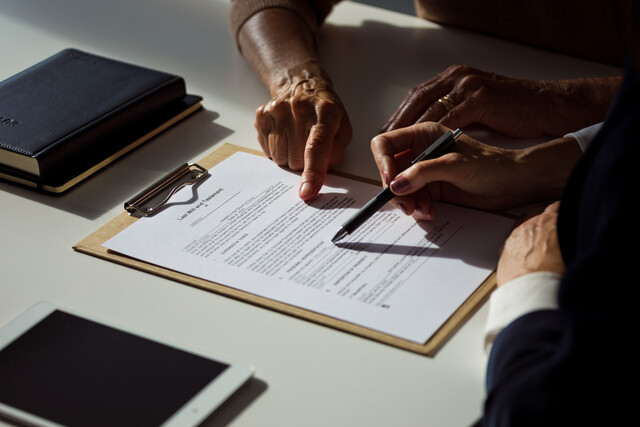There are thousands of things that can impact a community and prompt the community development process. One of the more significant and damaging are disasters. Every community has had to deal with the effects of a disaster at least once before during their existence. For the very few who have not, the prospect of what such an event can do to any facet of the community is stressful to think about. But they happen, and they happen every year. It's a serious thing that communities need to address.
With community development, disasters are usually viewed as a catalyst to include the process as the community rebuilds. In some cases, disasters highlight the problems in the community more so than daily operations do; it puts things under pressure. Disasters can also be an opportunity to test the improvements a community has made through community development, although it's not a test that anyone is really welcoming towards. Including disasters as a factor in community development plans, as a result, can be extremely beneficial later on when they actually occur.
This article will explore the relationship between disasters and community development. Topics will include the roles that community assets have during these events, and what steps a community can take to rebuild and restore itself to normal. Also included will be information about the different types of disasters and what they can do to the community, as well as the options available in the aftermath.
Community assets are typically going to play a role in how the community prepares, survives, and recovers from a disaster. These are resources that can have regular every day functions, but may become extremely valuable during an event. Think of things like food, water, shelter, medical supplies, and other similar items that may be limited but essential when disaster strikes. Any public services, like EMTs and police, can also be viewed as community assets and will most likely have training for disasters.
Experts and disaster relief organizations like FEMA recommend that people identify what resources they may need for emergencies and keep a checklist of what is needed and/or available.1 Such actions can help members of the community and the community's leadership prepare for such disasters when they strike. Checking on assets in the interim and tracking what is available can help the community make sure it is ready. Any assets that are set aside specifically for disasters should be inspected and evaluated regularly to ensure that they are in usable condition.
There are typically three types of disasters that can occur: natural, biological, and man-made. The first, natural, are the ones that most people think of when discussing disasters and they're also some of the most common to occur. 2016 was a record year for natural disasters, causing upwards of $18 billion dollars in damage in the United States.2 Many of these events are weather-based, which makes it difficult to prevent them. In most cases, there will be enough warning of an approaching natural disaster that communities will be able to take action.
The risk of a particular natural disaster occurring is contingent on weather conditions and location; some geographic areas are more prone than others for certain disasters. Some of the natural disasters that communities will want to consider taking preparatory actions for, regardless of their risk, include:
- Earthquakes-Earthquakes are particularly nasty because they can come with little warning and can trigger other disasters, like flooding and fires. They occur when parts of the earth's crust-tectonic plates-shift, deep below the surface. The shaking that is felt above ground is a byproduct of those movements as the plates move in relation to one another. Several earthquakes occurred in the U.S. in 2016, including a 5.8 magnitude in Oklahoma.3 Many U.S. cities are home to some of the deadliest earthquakes in recorded history, like the 1906 San Francisco quake.
- Floods-In recent years, floods have been developing more often and in more areas. They can be triggered by other events and cause loads of damage to a community. There are two types of flooding that should be addressed: general floods and flash floods. General floods develop gradually, and there are signs that precede them that allow for preparations to be made. Flash floods, on the other hand, develop quickly and with very little (if any) warning. Floods can destroy a lot because the water tends to stick around before receding and it can cause contamination and diseases to spread.4 As a result, resources and assets are incredibly important for survival.
- Wildfires-While any kind of fire can be devastating for a community, wildfires tend to develop and spread quickly based on weather conditions. Dry, drought-like conditions generate fuel for wildfires, as there is little natural presence to douse the flames. All that is needed is a little spark and a blaze can spring up to devour everything in its path. Some wildfires develop accidentally-careless disposal of trash, cigarettes, stray embers from bonfires-or even intentionally, which can make it difficult to prevent them. When the conditions are right, communities should take precautions to avoid generating a spark that may cause a wildfire.
- Hurricanes-As one of the nastier natural disasters, hurricanes can be especially deadly if community members do not properly prepare. They develop from tropical storms off the coast and weather officials watch for signs in order to give as much advanced warning as possible, usually anywhere from 48-12 hours' notice.5 When a hurricane is confirmed to be on the way, an evacuation may be issued for certain areas and those affected need to be ready to go as soon as the order is given.
- Tornados-Tornados can happen anywhere and may be preceded by bouts of severe storms. They can happen at any time of the year, but peak activity is during mid-spring to mid-summer depending on the weather conditions. As one of the most violent natural disasters, they cannot be seen by the naked eye unless debris, water, or dust is added to the funnel.6 Like hurricanes, the weather conditions that trigger tornados are heavily monitored to allow for warnings and notices to be issued.
Biological Disasters
Biological disasters can occur on their own or as a byproduct of another disaster. Flooding, for example, often brings biological threats by contaminating drinking water and other resources. Preparing for a biological disaster is going to depend on the form it takes and its source. The two most common forms that biological disasters can take on are:
- Diseases-Any kind of widespread disease epidemic can be incredibly harmful to the members of a community who are affected. This isn't the common cold, but serious diseases like bird or swine flu, cholera, measles, and meningitis that can be potentially fatal if left untreated.7 Epidemic classification occurs when these diseases begin to appear in large numbers and/or in areas where they normally don't occur. Monitoring documented cases can help determine the path an outbreak is taking, which can give communities in the way some warning. Preparations will largely involve stocking up on medical supplies, practicing proper sanitation, preventative healthcare, and education on symptoms. The type of disease is going to impact the details of those actions, as they vary from strain to strain.
- Infestations-Infestations of pests may seem like they would be classified more as a nuisance than a disaster, but their effects can lead to disaster-like conditions. Certain infestations, like insects and rodents, can bring diseases that infect both humans and animals. In agricultural communities, infestations can destroy crops and lead to economic disasters due to lost product. Infestations of small creatures, like rodents, can attract larger animals that prey on them; this can pose a danger for residents, as this can lead to an even worse infestation and more threats. Preparing for infestations means keeping an eye out for sudden, unexplained influxes of insect or other pest activity.
Man-Made Disasters
While most disasters will be a result of nature or other outside forces, there are also those caused by human actions. Man-made disasters can be especially worrisome because there is usually a good chance that they could have been avoided if someone would have been careful or have made a different decision. Many of these events are either accidental, but some can be intentional with questionable motives.
- Industrial Accidents-On a large scale, industrial accidents can have reverberating consequences throughout a community. Not only are people likely to be seriously injured or killed, but there is also the potential for economic effects within the community. Work usually halts while repairs are made and investigations into the cause(s) of the accident are made, which can temporarily make members of the community unemployed. Parts of a community that are closest to the location of an industrial accident may be directly impacted, especially if the accident wasn't contained within the facility.
- Special Emergencies-There are certain special emergencies, like massive acts of violence, that communities may face.8 In some cases, other types of disasters can be exasperated by human actions, which can then generate an entirely different, more complex disaster. Any incident that requires extensive assistance to combat-such as federal assistance-will often have a special set of actions and resources required to deal with the situation.
- Arson-Unlike wildfires, arson is a harmful action caused by someone intentionally setting a fire. It is categorized as a criminal act and often there are malicious motivations as to why the person started the fire in the first place.9 Communities usually need to approach arson the same way they would with any other criminal activity-security measures, safety protocols, etc. Arson fires can easily spread out of control, so there is a significant threat to the entire community, not just those who were targeted by an arsonist.
Rebuilding And Restoring
Using community development as a means of rebuilding and restoring a community after a disaster is one of the best ways the process can be used. It is intended to take poor or harmful conditions and make improvements to remedy the problems they cause after all. Historically, disasters as an opportunity to revamp a community has been used in severe cases. San Francisco (California), Greensburg (Kansas), and Tuscaloosa (Alabama) were all cities that had been devastated by disasters and used the destruction as a basis to rebuild themselves into something better.10
When used after a disaster, the community development process will usually follow the same order and methodology as it would in any other situation. The basics will not change, per se, but their application regarding the circumstances will. It's often a unique set of problems, with a restricted amount of resources that are immediately available. Communities will often have to be resilient in the days following a disaster, as the first stages of rebuilding occur during that time.11 Those first days are going to be crucial for the actions the community takes later on.
Communities that are trying to restore themselves after a disaster have access to a different set of resources than they would during other community development efforts. Most of these resources are available through the federal and state governments, as well as international non-profit groups that specialize in disaster relief. Organizations like FEMA and the Red Cross will usually make themselves available in the areas where disaster strikes, and they an offer many of the necessities that community members need to survive. Federal initiatives, like the Ready Campaign sponsored by FEMA and the Department of Homeland Security, provide informational resources that can be used to prepare for and recover from disasters.12 Disaster assistance resources specific to certain types of disasters are also available through the government as well.13
Resources used in standard community development efforts can also be used after a disaster, and there may be modified versions that are particular to a disaster. Funding programs like HUD's CDBG program have offshoots that are applicable only to communities who were affected by disaster and need funding to recover.14 Methods used to gather resources under normal circumstances, like fundraising or donations, are often work well when disaster relief is involved. The only thing that really changes regarding resources and community development after a disaster is the application. Instead of community outreach programs and public parks, it's medical treatment and debris clean-up.
























